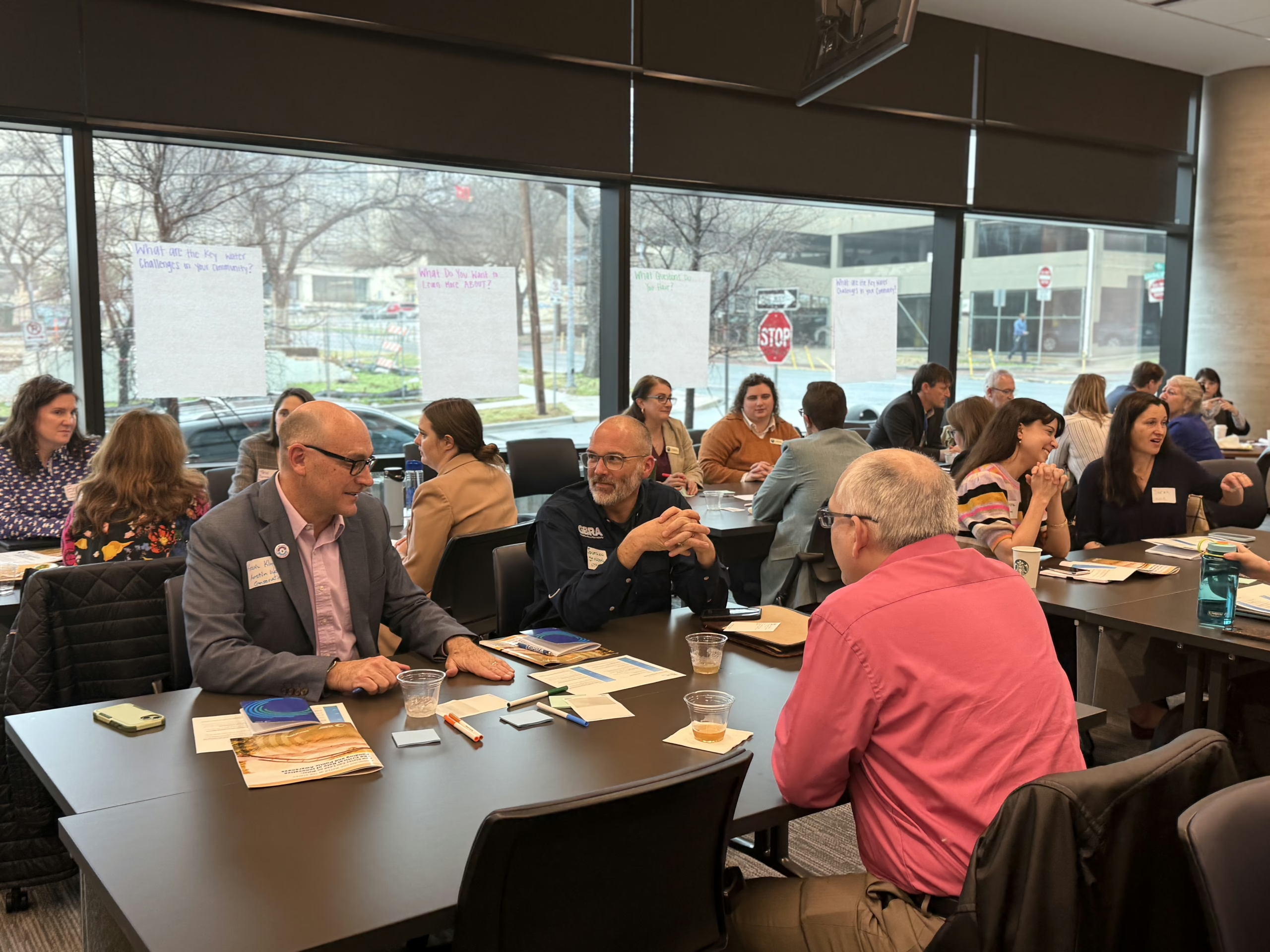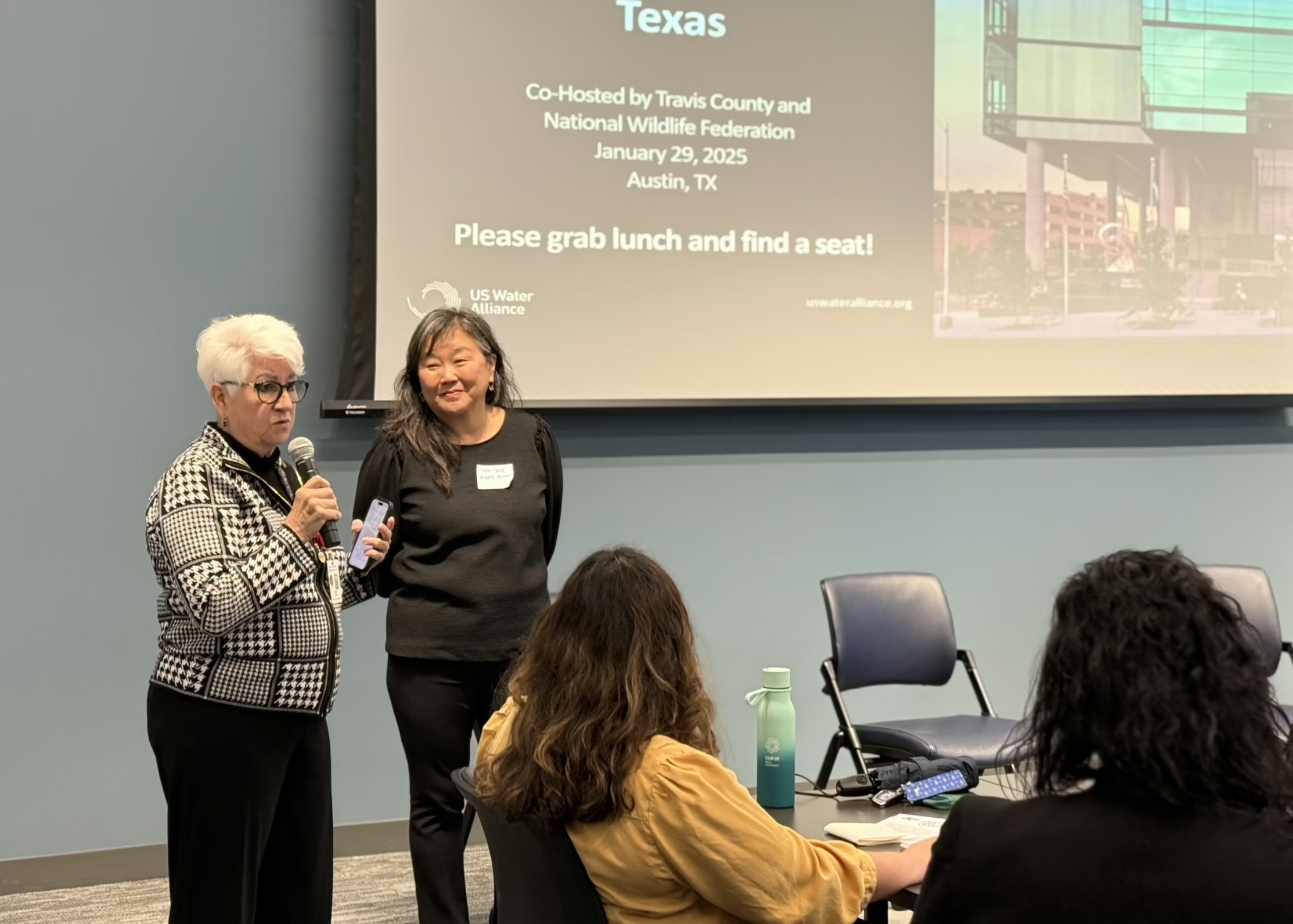The One Water approach reimagines how we manage all types of water—whether from the tap, a stream, a storm, an aquifer, or a sewer—by promoting collaboration, integration, and sustainability. This shift in thinking has the power to transform not just our water systems, but the very way we live, work, and interact with our environment. According to the Alliance’s 2023 State of the One Water Field Survey, over 80 communities nationwide are already adopting a One Water approach. Among them, certain regions stand out where dedicated advocates are turning One Water into a vital solution for tackling complex water challenges. Texas is one such standout, where passionate One Water champions are driving meaningful change and addressing some of the state’s most urgent water issues.

Texas Water Challenges: More than just Drought
The need for a reimagined approach to water planning and management in Texas is clear. Like the rest of the nation, the state grapples with damaging cycles of floods and worsening droughts, as well as rapid population growth straining limited water supplies. Add to that the pressure of rising infrastructure costs, the struggle to keep water rates affordable, ongoing water quality issues, a shrinking workforce, and growing concerns about the sustainability of long-term water supplies and the need for change becomes undeniable. Further, the diverse size and scale of water systems across the region make long-term planning even more complex. As these water challenges intensify, it is evident that we can no longer pretend that business as usual in the water sector is working to solve the challenges we face today.
Insights from Texas’ One Water Champions
 In January 2025, the US Water Alliance, in partnership with Travis County, the National Wildlife Federation, the Meadows Center for Water and the Environment, and the Texas Water Development Board, convened water leaders from across the state to explore how they are addressing Texas’ pressing water challenges through the lens of One Water. Hosted at the Travis County Family Courts Facility in Austin, nearly 60 participants including water utilities and public agencies, private firms, nonprofit organizations, and philanthropies gathered for an inspiring half-day Peer Dialogue on One Water leadership in Texas. This event ignited dynamic conversations and sparked new ideas for driving meaningful change in water management across the state.
In January 2025, the US Water Alliance, in partnership with Travis County, the National Wildlife Federation, the Meadows Center for Water and the Environment, and the Texas Water Development Board, convened water leaders from across the state to explore how they are addressing Texas’ pressing water challenges through the lens of One Water. Hosted at the Travis County Family Courts Facility in Austin, nearly 60 participants including water utilities and public agencies, private firms, nonprofit organizations, and philanthropies gathered for an inspiring half-day Peer Dialogue on One Water leadership in Texas. This event ignited dynamic conversations and sparked new ideas for driving meaningful change in water management across the state.
The dialogue explored how Texas is leading the way in implementing the key components of a One Water approach such as:
- Stakeholder Engagement and Education: Speakers emphasized the importance of educating decision-makers and the public about One Water management strategies, especially as a way to stretch current water supplies into the future. Participants also spoke to the importance of engaging community members in developing solutions.
- Water Efficiency and Conservation: With growing concerns over water scarcity, Texas is focusing on how to get the most out of every drop of water. This includes strategies such as water conservation, reuse, and storage. Communities are beginning to rethink their relationship with water to prepare for future challenges like population growth, climate change, and uncertain water availability.
- Collaboration Across Jurisdictions: Greater collaboration is needed across local and state agencies to reduce competition between regions and share best practices. This collaboration is essential for creating policies and strategies that meet community needs.
- One Water Practices and Examples: Participants shared examples of successful One Water practices, ranging from on-site rainwater harvesting systems to large-scale city-wide planning. For instance, the Kerr County Youth Event Center and their Peterson Regional Medical Center use rainwater and air conditioning condensate for non-potable water uses while Austin’s Water Forward Plan, the city’s 100-year integrated water resource plan, incorporates diverse strategies like aquifer storage and reuse while leaving space for adaptability.
- Policies and Funding: Adopting One Water policies at the local and state levels can serve as an opportunity to coordinate and resource One Water efforts. For example, municipal One Water resolutions and city ordinances can encourage developers and commercial builders to adopt One Water strategies. Additionally, Texas is serving as a leader in securing state funding for water but recognizes there is still much room for growth.
- Philanthropy’s Role: Foundations such as the Cynthia and George Mitchell Foundation and Texas Wellspring Fund are supporting the adoption of One Water approaches in Texas. These organizations are backing a range of needs including research, case studies, pilot projects, and convenings. Their contributions are critical in fostering cross-sector collaboration and in demonstrating the success of One Water strategies. Speakers spoke to the need for more philanthropy to get involved in funding and supporting One Water approaches.
- The Future of One Water in Texas: The dialogue concluded with a call for continued investment in One Water strategies. Participants emphasized the need to include all sectors in decision-making processes, with community engagement and inclusion driving the change needed to build resilience against future water challenges.
Looking Ahead: The Future of One Water in Texas and Beyond
This Peer Dialogue concluded with a clear message: the future of successful water management in Texas depends on collaboration, adaptability, and continued investment in innovative solutions. One Water isn’t just for big cities; it’s an approach that can be integrated at every scale, from individual buildings to statewide policies.
One Water isn’t just a vision—it’s a roadmap for a sustainable water future. By embracing these strategies, Texas is showing the nation how to turn challenges into opportunities. And together, we can build a resilient water future for all.
“What is so beautiful about One Water is it’s focused on communities and their needs—right-sizing a solution for each community. It’s focused on the great idea of being as inclusive as possible for all sectors of the community. A One Water approach creates space that allows for community members to engage in authentic ways.” – Emily Warren Armitano, The Cynthia & George Mitchell Foundation



